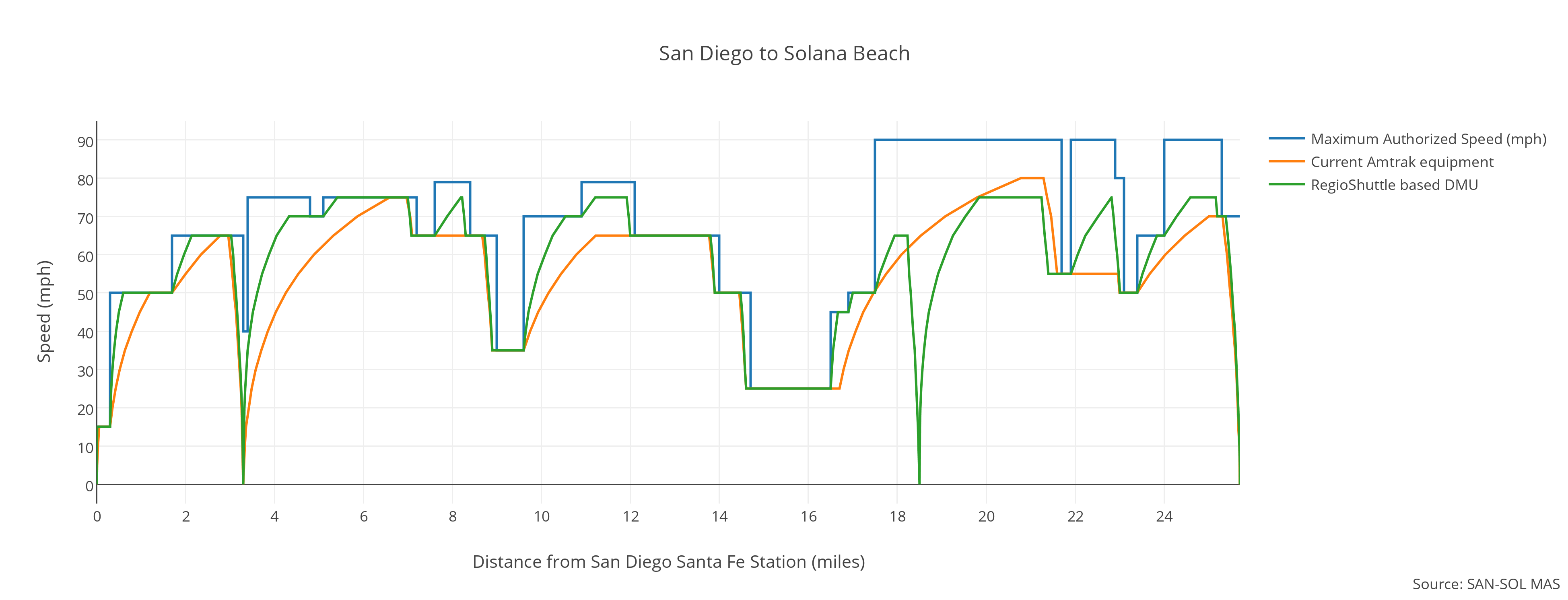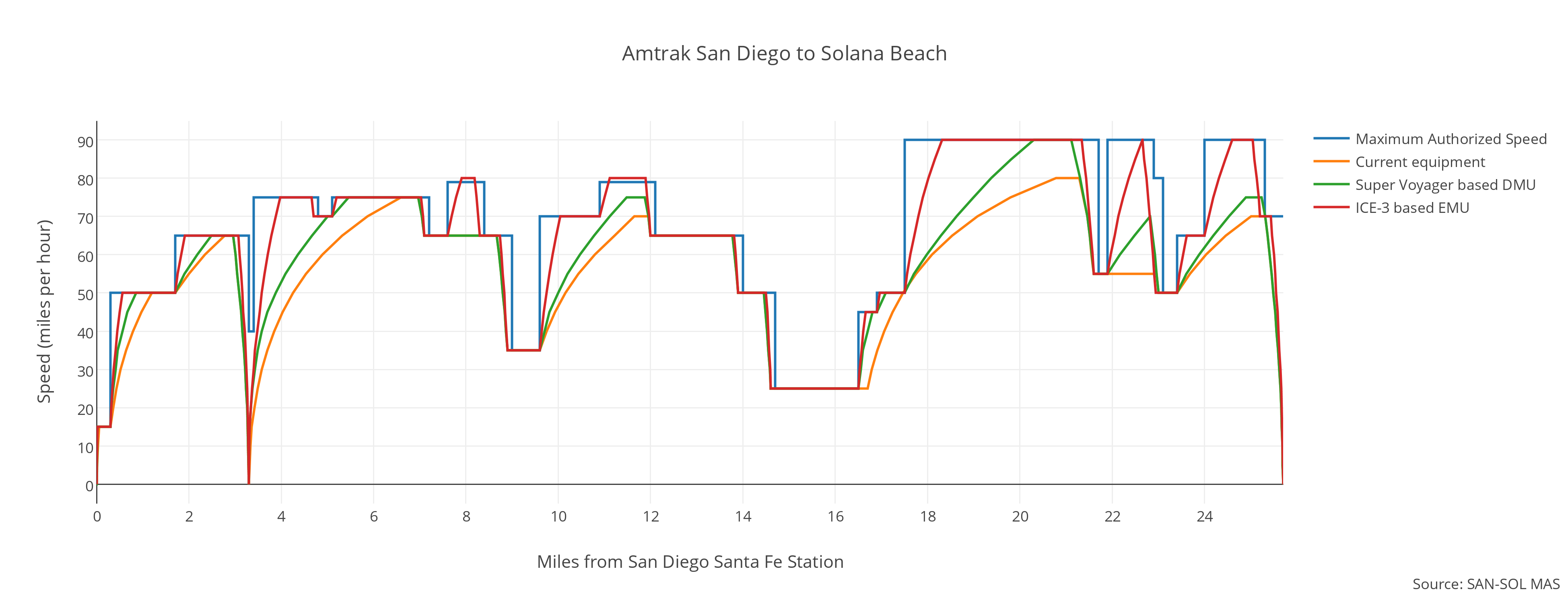That's slowness both in terms of low speed limits (especially in the middle of higher ones) and in terms of poor acceleration. I'm currently working on a personal project that involves mapping out the San Diego-Los Angeles corridor to see the benefits of reequipping the fleet with DMUs or electrifying the line as well as identifying where improvements ought to be made; the end goal is to basically put together a list that can be used for identifying the biggest bang for the buck in terms of schedule reduction (for Amtrak, Metrolink, and Coaster) and for identifying priorities with arbitrary pots of money. With that out of the way, this is what the route looks like between San Diego and Solana Beach with the current equipment (modeled from MBTA's Fairmount study and the new bilevel car braking specifications).

As you can tell, despite several miles of 90 mile per hour clearance, the speed won't reach above 80 miles per hour. There's no point to maintaining the track above Class IV, the train simply won't make it before it has to brake for a slow zone. I've not yet done the work, but I strongly suspect that a RegioShuttle making an additional stop at Sorrento Valley (MP 18.5) would probably reach Solana Beach before a Surfliner with the current equipment despite its lower rated speed limit (75 mph). 75 miles per hour in ~93 seconds instead of 256 seconds should cut off quite a good chunk of time.
The problem of course is we get things like the Chicago-St. Louis high speed rail which raises a fair number of areas to a maximum authorized speed of 110 miles per hour, at significant expense, but leaves a large chunk of the route at slow speeds (Alton-St. Louis). Thanks to low acceleration, the gains for running above 80 miles per hour aren't terribly high and make a negligible impact upon the total running time; getting rid of slow speed zones and simply increasing the speed with which a train accelerates to speed are far more important and influential.
This particular bit does seem to map out fairly well to reality, this modeled the run at 32 minute 15 seconds; Amtrak's scheduled run time is 34 minutes including dwell time at Old Town.
Also, if anyone has a copy of Union Pacific's Los Angeles Area Timetable and could forward it, I'll be able to, eventually, do this all the way up to Goleta. And I'm aware that this may very well simply be preaching to the choir, but hey, neat visual aid for the choir to use now at the very least.

As you can tell, despite several miles of 90 mile per hour clearance, the speed won't reach above 80 miles per hour. There's no point to maintaining the track above Class IV, the train simply won't make it before it has to brake for a slow zone. I've not yet done the work, but I strongly suspect that a RegioShuttle making an additional stop at Sorrento Valley (MP 18.5) would probably reach Solana Beach before a Surfliner with the current equipment despite its lower rated speed limit (75 mph). 75 miles per hour in ~93 seconds instead of 256 seconds should cut off quite a good chunk of time.
The problem of course is we get things like the Chicago-St. Louis high speed rail which raises a fair number of areas to a maximum authorized speed of 110 miles per hour, at significant expense, but leaves a large chunk of the route at slow speeds (Alton-St. Louis). Thanks to low acceleration, the gains for running above 80 miles per hour aren't terribly high and make a negligible impact upon the total running time; getting rid of slow speed zones and simply increasing the speed with which a train accelerates to speed are far more important and influential.
This particular bit does seem to map out fairly well to reality, this modeled the run at 32 minute 15 seconds; Amtrak's scheduled run time is 34 minutes including dwell time at Old Town.
Also, if anyone has a copy of Union Pacific's Los Angeles Area Timetable and could forward it, I'll be able to, eventually, do this all the way up to Goleta. And I'm aware that this may very well simply be preaching to the choir, but hey, neat visual aid for the choir to use now at the very least.






